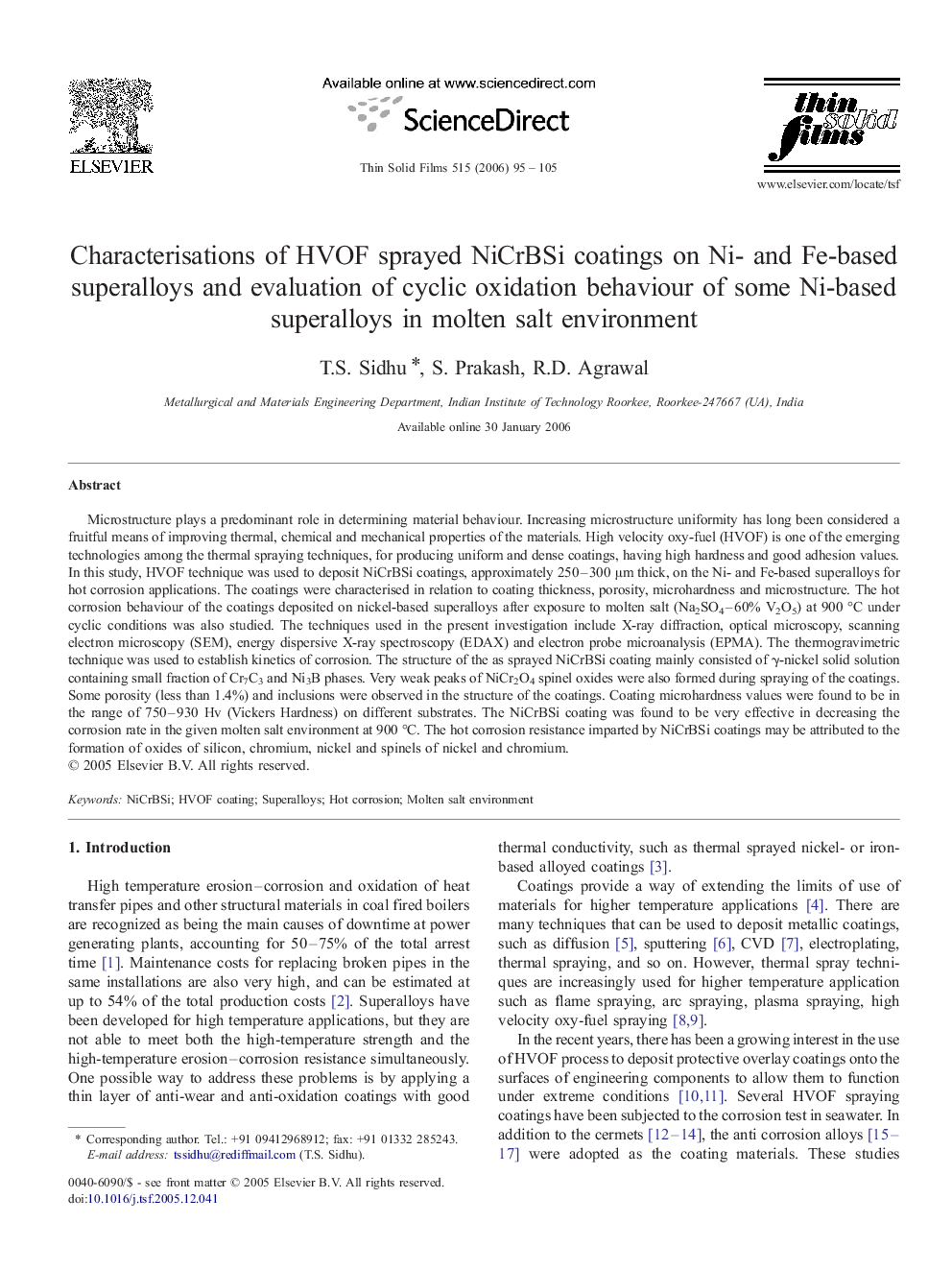| کد مقاله | کد نشریه | سال انتشار | مقاله انگلیسی | نسخه تمام متن |
|---|---|---|---|---|
| 1676708 | 1009007 | 2006 | 11 صفحه PDF | دانلود رایگان |

Microstructure plays a predominant role in determining material behaviour. Increasing microstructure uniformity has long been considered a fruitful means of improving thermal, chemical and mechanical properties of the materials. High velocity oxy-fuel (HVOF) is one of the emerging technologies among the thermal spraying techniques, for producing uniform and dense coatings, having high hardness and good adhesion values. In this study, HVOF technique was used to deposit NiCrBSi coatings, approximately 250–300 μm thick, on the Ni- and Fe-based superalloys for hot corrosion applications. The coatings were characterised in relation to coating thickness, porosity, microhardness and microstructure. The hot corrosion behaviour of the coatings deposited on nickel-based superalloys after exposure to molten salt (Na2SO4–60% V2O5) at 900 °C under cyclic conditions was also studied. The techniques used in the present investigation include X-ray diffraction, optical microscopy, scanning electron microscopy (SEM), energy dispersive X-ray spectroscopy (EDAX) and electron probe microanalysis (EPMA). The thermogravimetric technique was used to establish kinetics of corrosion. The structure of the as sprayed NiCrBSi coating mainly consisted of γ-nickel solid solution containing small fraction of Cr7C3 and Ni3B phases. Very weak peaks of NiCr2O4 spinel oxides were also formed during spraying of the coatings. Some porosity (less than 1.4%) and inclusions were observed in the structure of the coatings. Coating microhardness values were found to be in the range of 750–930 Hv (Vickers Hardness) on different substrates. The NiCrBSi coating was found to be very effective in decreasing the corrosion rate in the given molten salt environment at 900 °C. The hot corrosion resistance imparted by NiCrBSi coatings may be attributed to the formation of oxides of silicon, chromium, nickel and spinels of nickel and chromium.
Journal: Thin Solid Films - Volume 515, Issue 1, 25 September 2006, Pages 95–105